
For the last 2 years, our studio developed a modular building system that investigates the connection of people with their food and creates a building that connects architecture with agriculture.
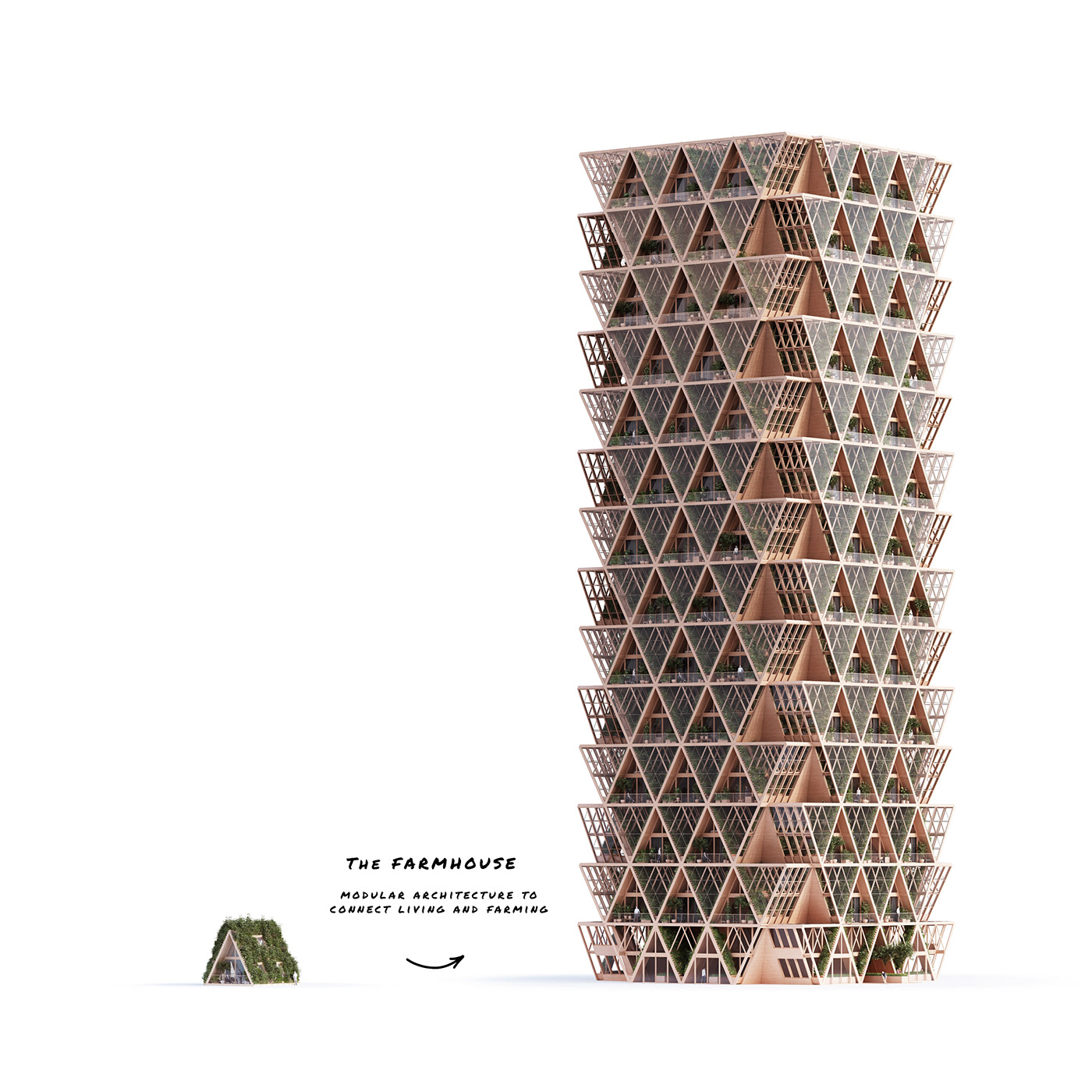
Premise
During the last 2 centuries we became disconnected from our food. For thousands of years, people, their food and cities were intertwined. The beginning of farming gave birth to our first permanent settlements and both grew, hand in hand, with the demand for more food and more livable areas.
With the industrial revolution this changed. Advances in transportation and preservation made it possible to deliver goods faster and store them longer. The process of growing food moved out of our sights and out of our minds.
Since then, agriculture and architecture battle for territory and resources. The need for growth and the greed for profitability brought our natural habitat to the brink of existence. The building and the agriculture sector are the two largest polluting industries and each day, 90% of the world’s population breathes polluted air. Both sectors became harmful to us. Obesity, diabetes, heart disease and lung cancer are an outcome of a one-sided diet and an unhealthy environment.
With the industrial revolution this changed. Advances in transportation and preservation made it possible to deliver goods faster and store them longer. The process of growing food moved out of our sights and out of our minds.
Since then, agriculture and architecture battle for territory and resources. The need for growth and the greed for profitability brought our natural habitat to the brink of existence. The building and the agriculture sector are the two largest polluting industries and each day, 90% of the world’s population breathes polluted air. Both sectors became harmful to us. Obesity, diabetes, heart disease and lung cancer are an outcome of a one-sided diet and an unhealthy environment.
But food and shelter are human needs and architects can rethink their relation. There is an opportunity to reconnect architecture and agriculture and change them to the betterment of both.
“I think we miss this physical and mental connection with nature and this project could be a catalyst to reconnect ourselves with the life-cycle of our environment,” says Chris Precht.
“I think we miss this physical and mental connection with nature and this project could be a catalyst to reconnect ourselves with the life-cycle of our environment,” says Chris Precht.
His wife and partner Fei Precht adds: ”Our motivation for ‘the Farmhouse’ is personal. 2 years ago we relocated our office from the centre of Beijing to the mountains of Austria. We live and work now off the grid and try to be as self-sufficient as somehow possible. We grow most of the food ourselves and get the rest from neighboring farmers. We have now a very different relation to food. A tomato from your garden tastes different then the one shipped around the globe. We are aware that this life-style is not an option for everyone, so we try to develop projects, that brings food back to cities.”


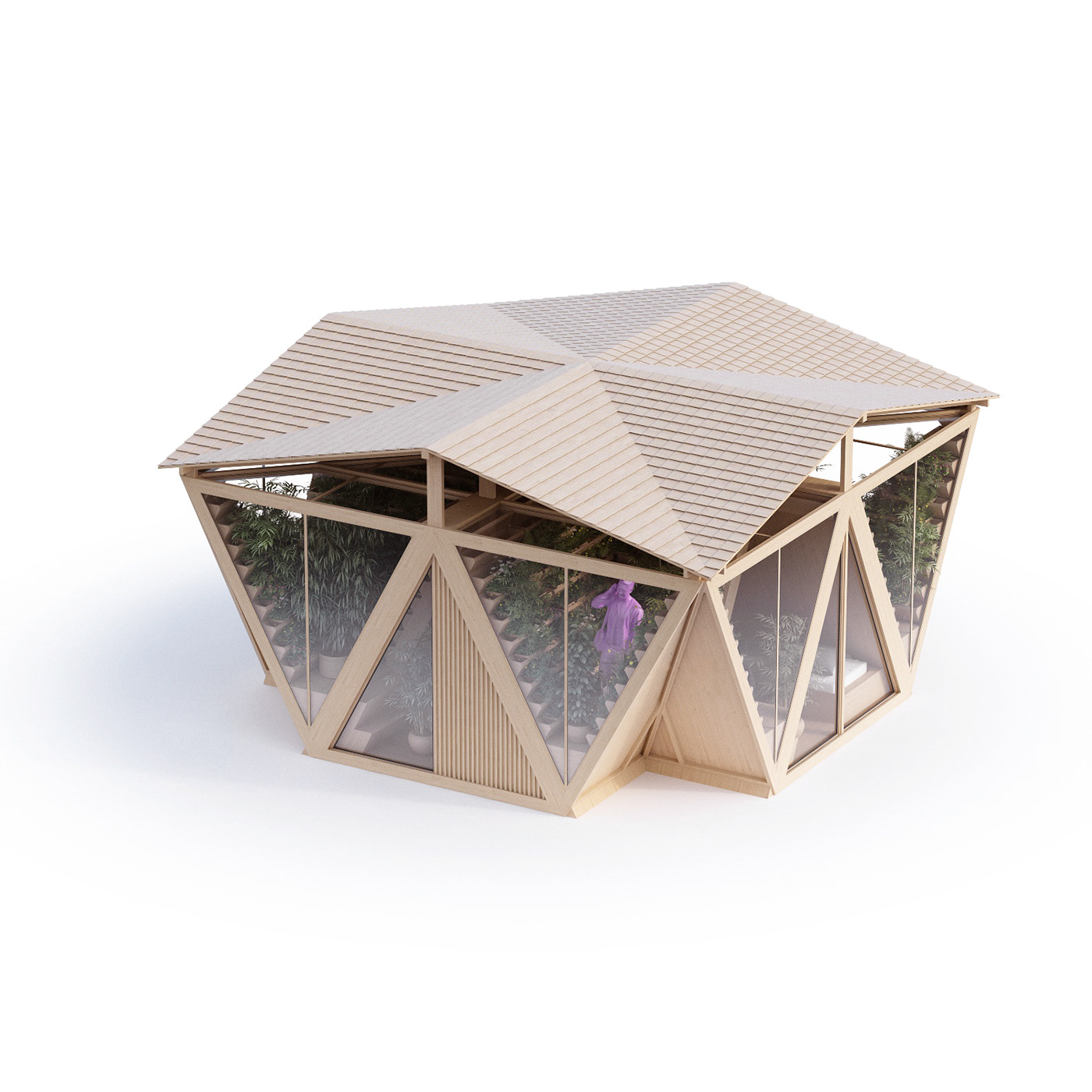




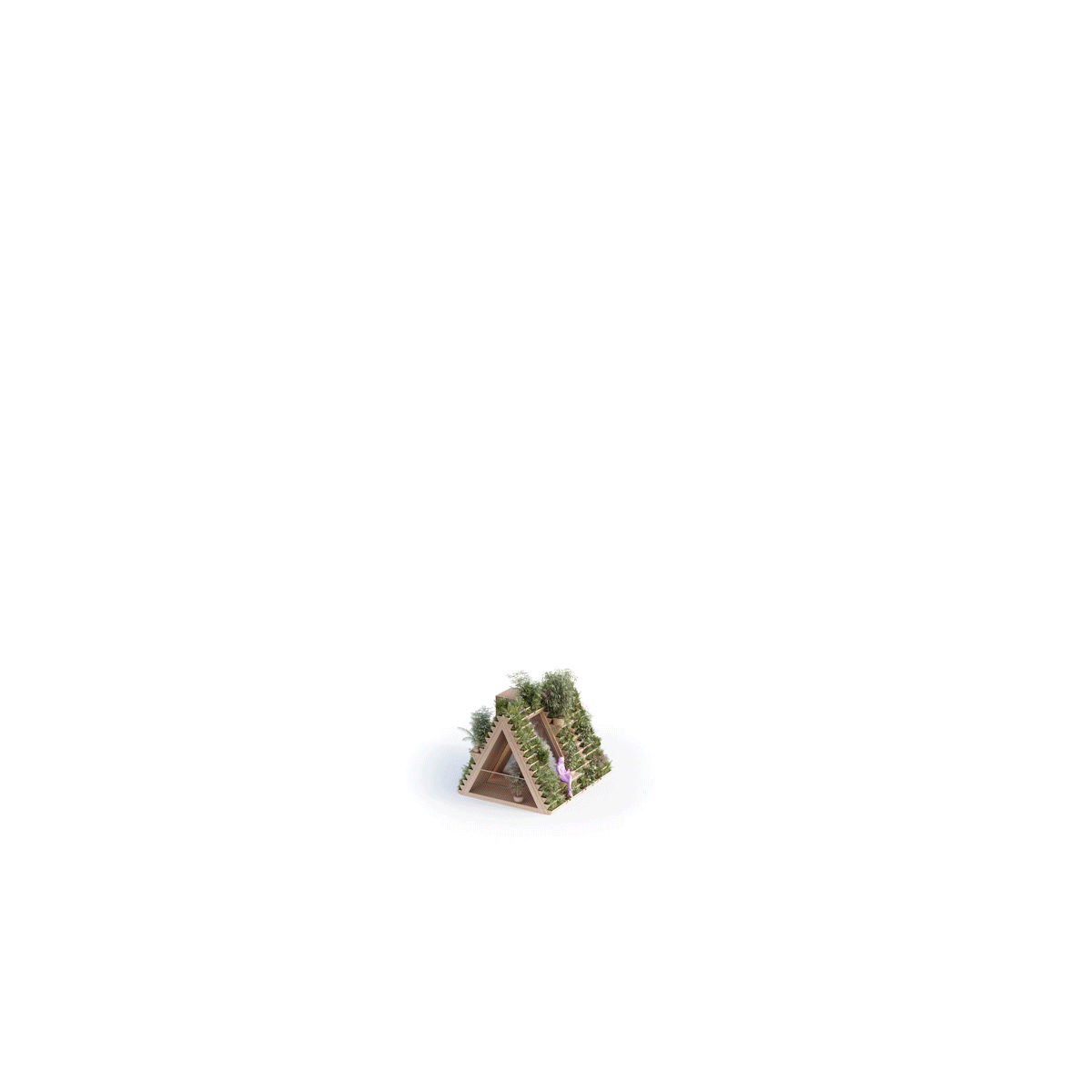

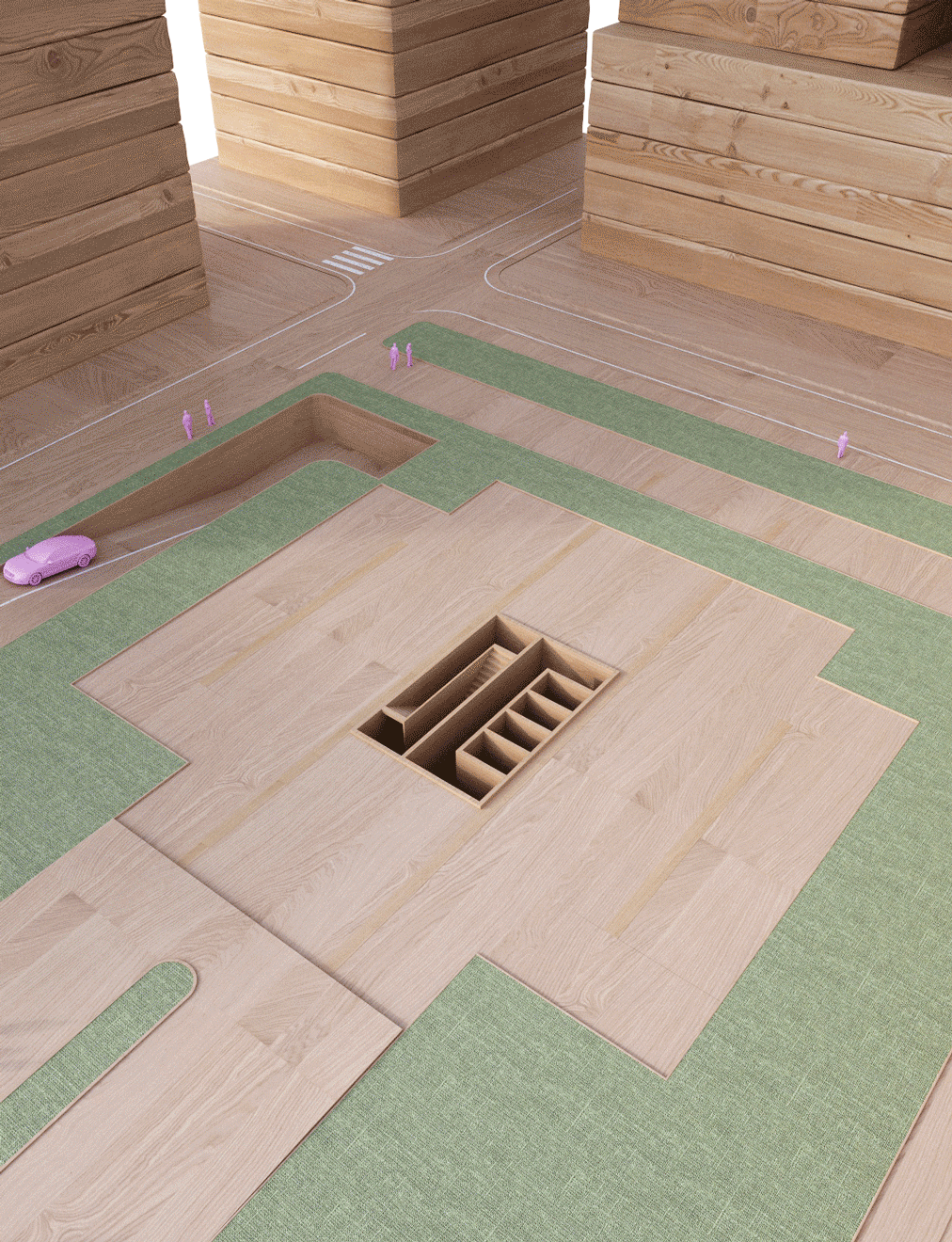
The Farm
In the next 50 years more food will be consumed than in the last 10.000 years combined and 80% will be eaten in cities. It is clear that we need to find an ecological alternative to our current food system. What and where we grow and eat. Topics like organic agriculture, clean meat, social sourcing and ‘farm to table’ will be key elements of this change. That means that our urban areas need to become part of an organic loop with the countryside to feed our population and provide food security for cities.
If food is grown within the region, the supply chain and the use of packaging gets shortened. Stacked gardens reduce the need to convert forests, savannas and mangroves and allows used farmland to naturally restore itself. Vertical farms can produce a higher ratio of crop per planted area. The indoor climate of greenhouses protect the food against varying weather conditions and offers different eco-systems for different plants.
Our Farmhouse runs on an organic life-cycle of byproducts inside the building, where one processes output is another processes input: Buildings create already a large amount of heat, which can be reused for plants like potatoes, nuts or beans to grow. A water-treatment system filters rain- and greywater, enriches it with nutrients and cycles it back to the greenhouses. The food waste can be locally collected in the buildings basement, turned into compost and reused to grow more food.
If food is grown within the region, the supply chain and the use of packaging gets shortened. Stacked gardens reduce the need to convert forests, savannas and mangroves and allows used farmland to naturally restore itself. Vertical farms can produce a higher ratio of crop per planted area. The indoor climate of greenhouses protect the food against varying weather conditions and offers different eco-systems for different plants.
Our Farmhouse runs on an organic life-cycle of byproducts inside the building, where one processes output is another processes input: Buildings create already a large amount of heat, which can be reused for plants like potatoes, nuts or beans to grow. A water-treatment system filters rain- and greywater, enriches it with nutrients and cycles it back to the greenhouses. The food waste can be locally collected in the buildings basement, turned into compost and reused to grow more food.
“This process of food production becomes visible,” says Precht. “It reenters the centre of our cites and the centres of our minds. Food is an important part of our daily life and I see ‘the Farmhouse’ as an educational statement that it’s no longer a mystery where our food comes from and how it lands on our table.”


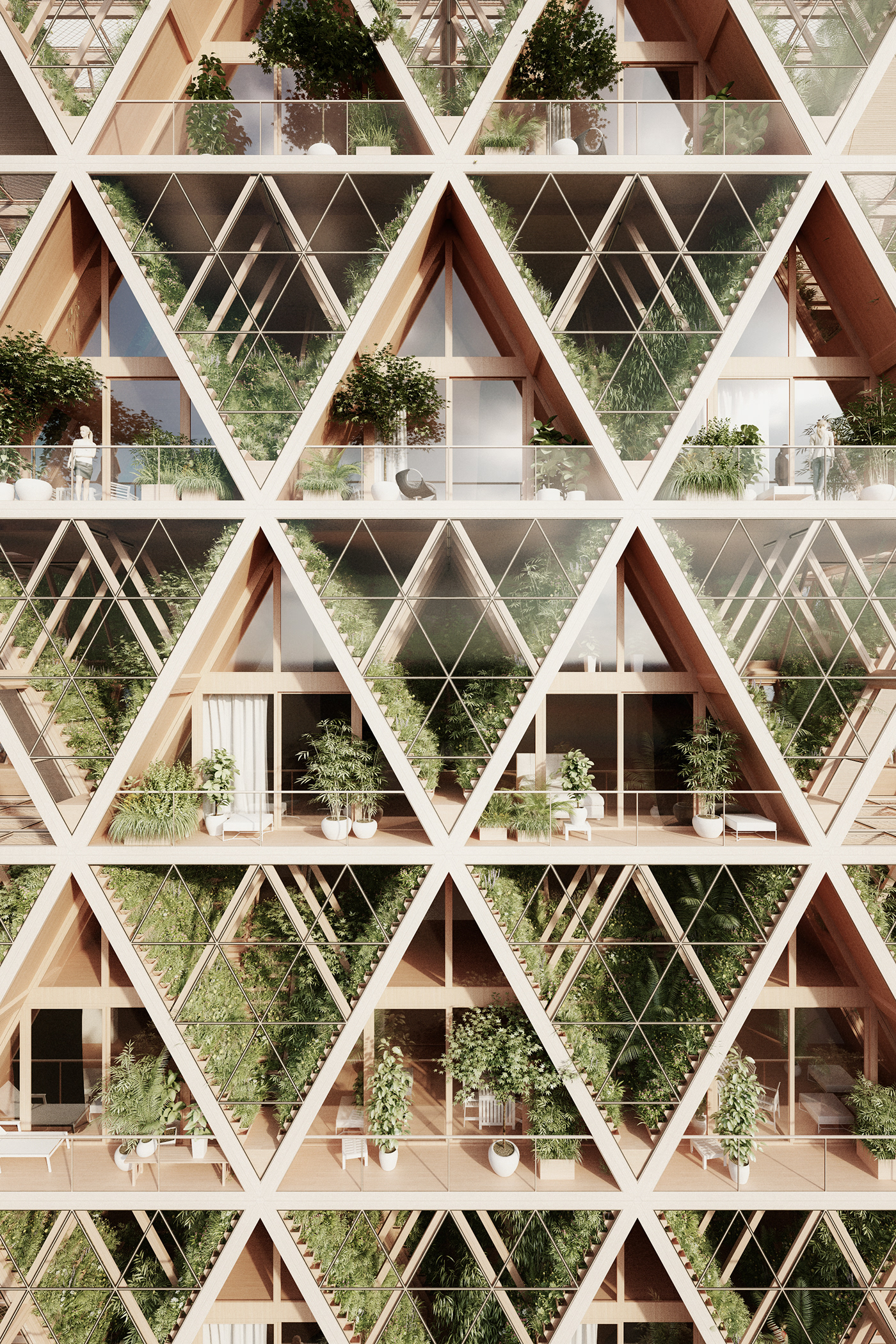
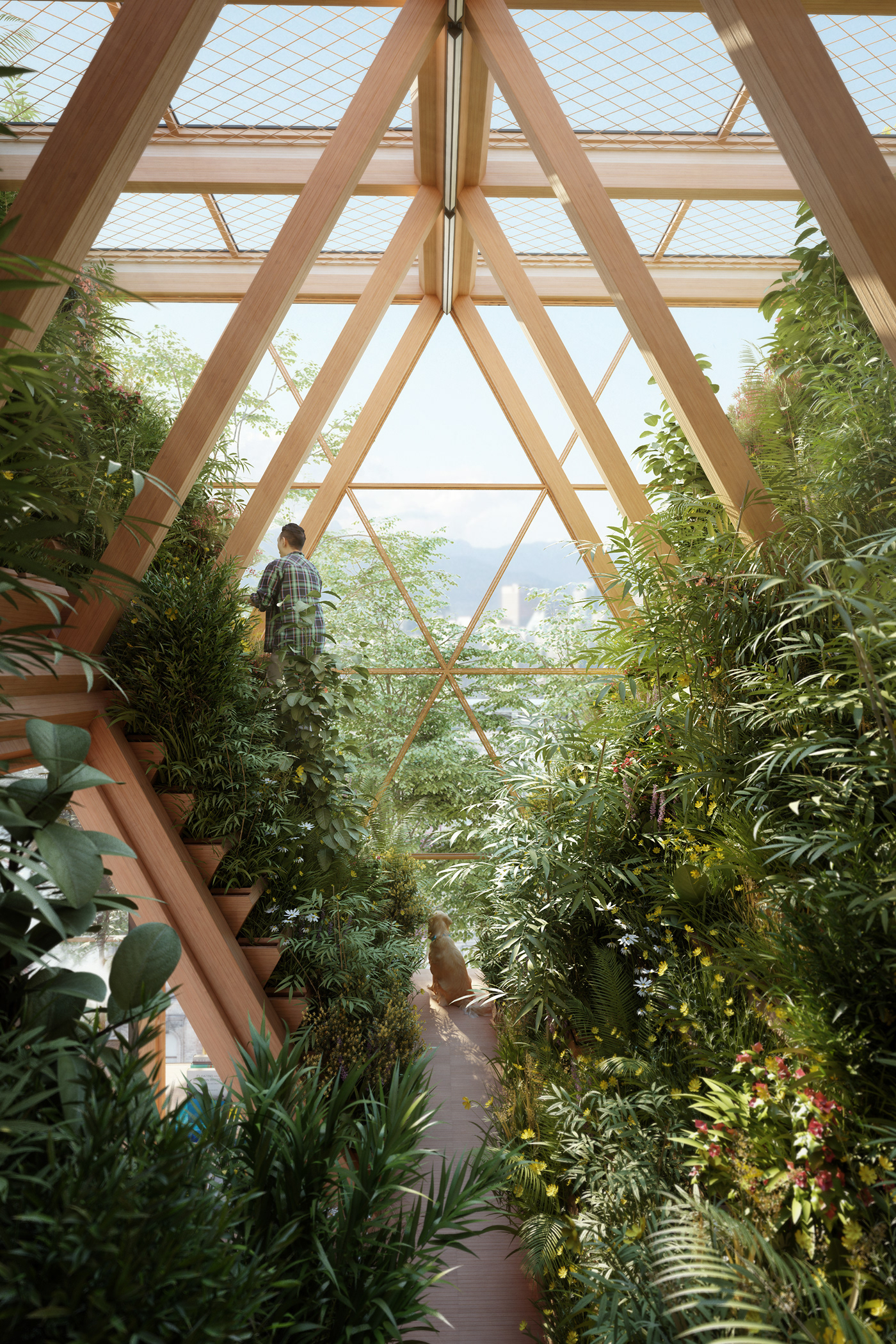
The House
The foundation of the Farmhouse is to encourage citizens to grow food locally, but it also continues this ecological aspect with its architecture.
“In a way, we construct our farmland and we plant our building.” Trees provide the main building material for the Farmhouse. Cross Laminated Timber panels are used to develop the modular system of structure, finishes and planters. Working with CLT has a lot of benefits. It is precise to fabricate, easy to transport and quick to install. Living with wood has also ecological benefits: Trees grow by a natural source of energy. The process that creates structural engineered wood products takes far less energy than steel, cement or concrete and produces fewer greenhouse gases during manufacturing. Further, wood stores carbon in itself (approximately one tone per cubic meter) thus it has, compared to other building materials, a lighter overall environmental footprint.
“In a way, we construct our farmland and we plant our building.” Trees provide the main building material for the Farmhouse. Cross Laminated Timber panels are used to develop the modular system of structure, finishes and planters. Working with CLT has a lot of benefits. It is precise to fabricate, easy to transport and quick to install. Living with wood has also ecological benefits: Trees grow by a natural source of energy. The process that creates structural engineered wood products takes far less energy than steel, cement or concrete and produces fewer greenhouse gases during manufacturing. Further, wood stores carbon in itself (approximately one tone per cubic meter) thus it has, compared to other building materials, a lighter overall environmental footprint.
The Farmhouse consists of a fully modular building system, which is prefabricated offsite and flat-packed delivered by trucks. Prefabrication of a modular building kit shortens the time for construction and its affect on the surrounding. The building system is based on structural clarity of traditional A-Frame houses and connects to a dia-grid that runs the loads through the building. Each wall of the frame exists of 3 layers. An inside layer with finishes, electricity and pipes, a middle layer with structure and insulation and an outside layer with gardening elements and water supply.




For single-family structures, this systems gives a tool to home-owners to design their own place, based on the needs and the demands to living and farming. Structural and gardening elements, waste management units, water treatment, hydroponics and solar systems can be selected from a catalog of modules and offers a certain flexibility for various layouts.
The hands-on approach of the DIY movement played a big role in the design. Not only for the gardening part of the building, but also for its construction. This method allows owners to self-construct their tiny houses based on their chosen layout. Architecture that is home-built with food that is home-grown.
Taller structures are assembled as duplex-sized A-frames, which provide a large open space on the first floor for a living-room and kitchen and a tent-like space on the second floor for bedrooms and bathrooms. The angled walls give space for gardening on their outside and create a V-shaped buffer zone between the apartments. This also lets natural ventilation and natural light into the building. The building invokes a direct connection with a natural surrounding, that stands apart from the concrete landscape of our cities. A tent that is surrounded by nature. A Yin&Yang of colorful gardens and healthy interiors.
The hands-on approach of the DIY movement played a big role in the design. Not only for the gardening part of the building, but also for its construction. This method allows owners to self-construct their tiny houses based on their chosen layout. Architecture that is home-built with food that is home-grown.
Taller structures are assembled as duplex-sized A-frames, which provide a large open space on the first floor for a living-room and kitchen and a tent-like space on the second floor for bedrooms and bathrooms. The angled walls give space for gardening on their outside and create a V-shaped buffer zone between the apartments. This also lets natural ventilation and natural light into the building. The building invokes a direct connection with a natural surrounding, that stands apart from the concrete landscape of our cities. A tent that is surrounded by nature. A Yin&Yang of colorful gardens and healthy interiors.
The gardens can be used privately for residents to grow their own food, or as a collaborative effort to plant vegetables and herbs for a wider community. After the harvest, the food can be shared or sold at an indoor farmers market on the lower floors of the building. Educational classes, a root cellar and compost units round up the idea of an ecological loop within one building.






A Sensible Place
With the domination of the ‘International Style’ with concrete frames and curtain walls, our buildings became mostly unanimous and uninspiring. It made our cities look alike disregarding culture or climate. Our cities are filled with ivory towers, that just consume from the environment without giving anything back. They are island and their connection with the surrounding stops at the doorman. Due to population growth and the vast expansion of our urban areas, we also pushed nature outside and became distant to it.
“If we stay disconnected with our eco-system, we cannot tackle the issues of our time. Reversing climate change, less pollution and a healthy food system, is now part of architecture. Those problems wont be solved by new technology or new products alone. They will be solved by empathy. And this can become a task for us architects. If we want to encourage people to care about the environment, we need to bring the environment back into our cites.”
For architects that means to create buildings that appeal to all senses: Buildings that are made with haptic materials that you want to touch and look at. Buildings you can listen to, because birds and bees will be a part of their ecosystem. Buildings with the scent of vegetables and herbs. And buildings that you can partly eat, because they support food production.
“If we stay disconnected with our eco-system, we cannot tackle the issues of our time. Reversing climate change, less pollution and a healthy food system, is now part of architecture. Those problems wont be solved by new technology or new products alone. They will be solved by empathy. And this can become a task for us architects. If we want to encourage people to care about the environment, we need to bring the environment back into our cites.”
For architects that means to create buildings that appeal to all senses: Buildings that are made with haptic materials that you want to touch and look at. Buildings you can listen to, because birds and bees will be a part of their ecosystem. Buildings with the scent of vegetables and herbs. And buildings that you can partly eat, because they support food production.
The Farmhouse is an example of a building that is part of our eco-system. It lives, breaths and grows and is not islands in the city, but integral part to the wider neighborhood.
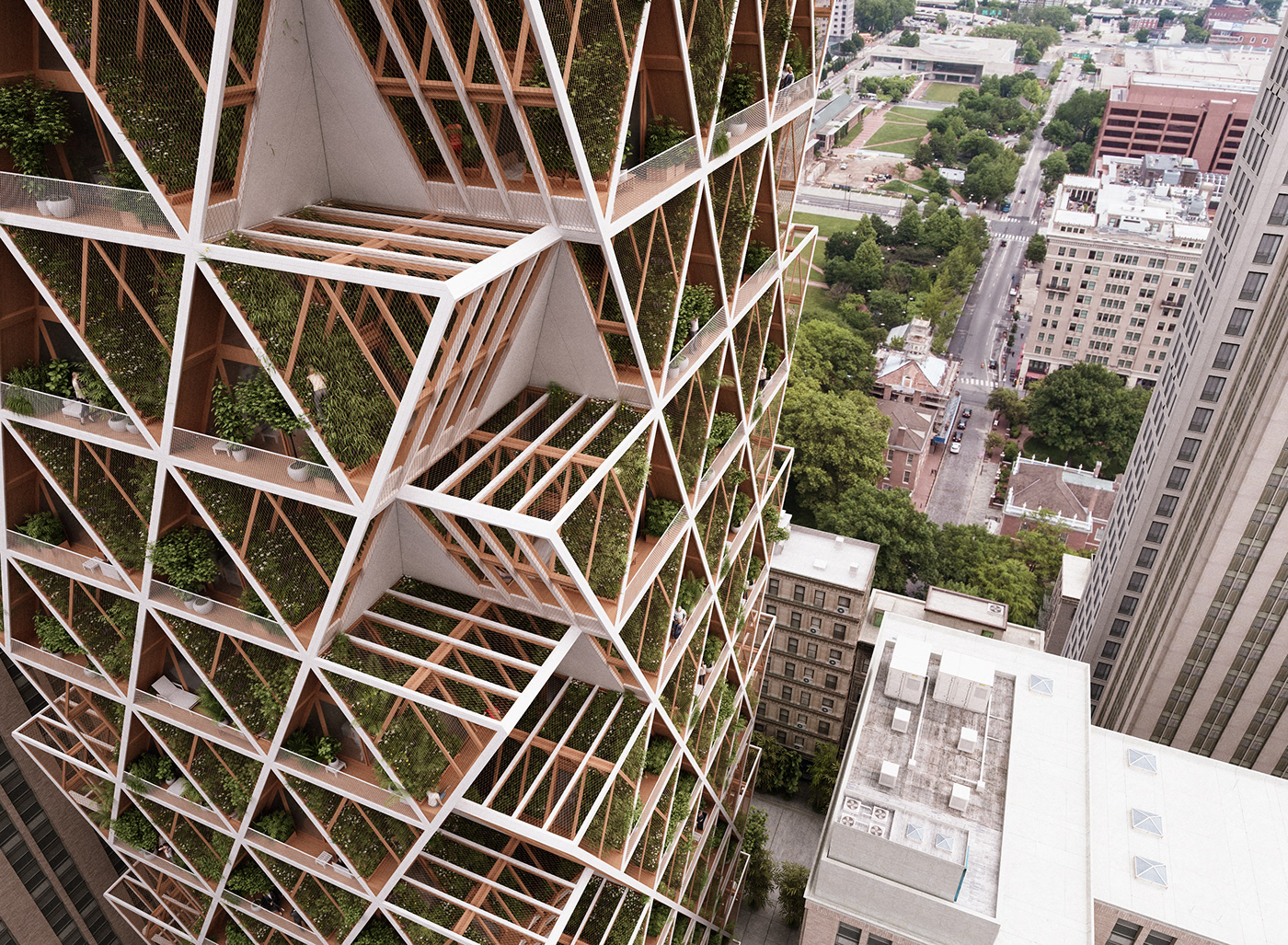
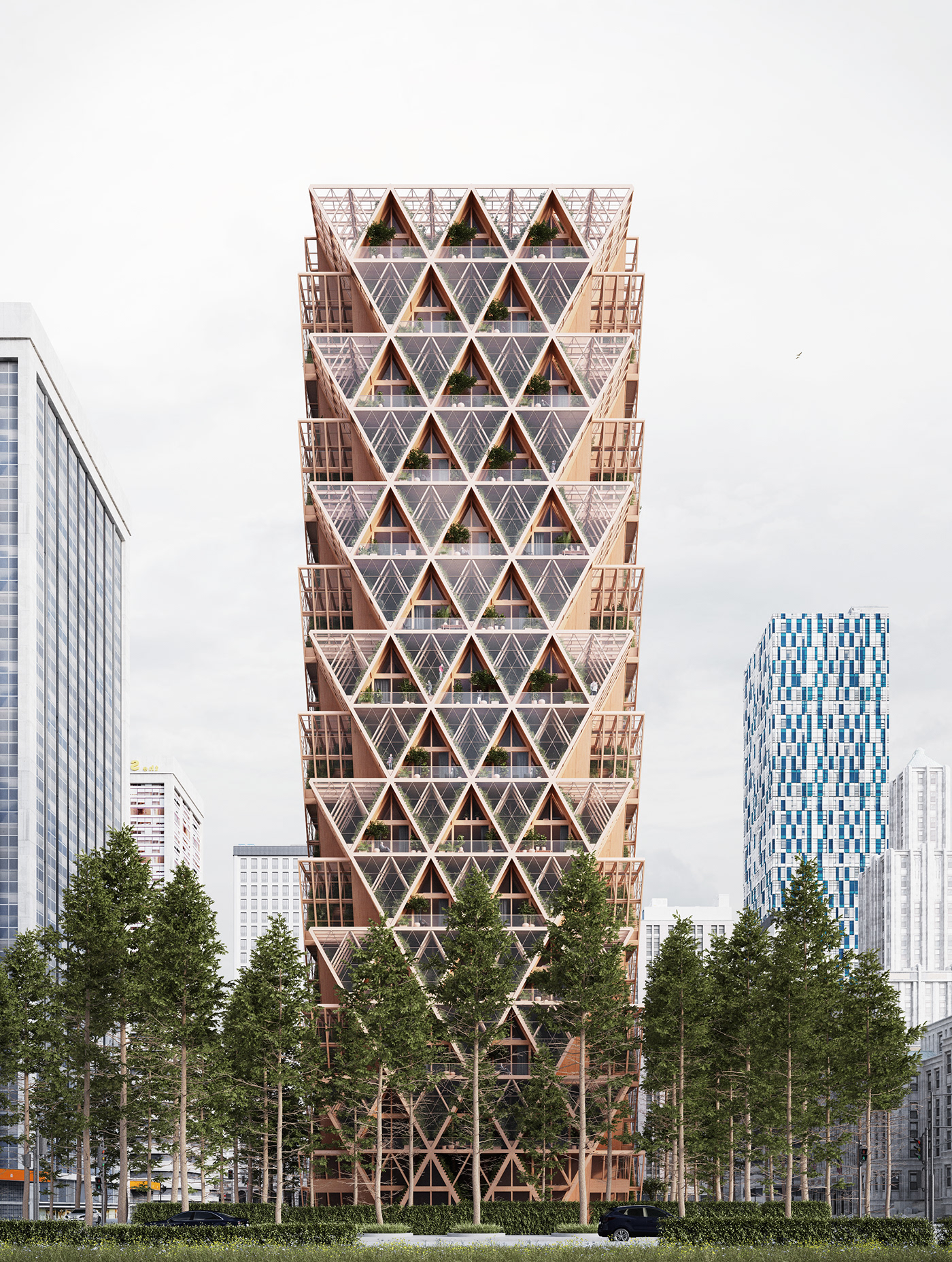
‘Precht’ is a small team of architects, who work and live in the mountains of Austria. The Farmhouse is a self-initiated project by us. We spent the last 2 years developing this building system, because we believe in the importance to be connected to nature and the food production process. Through a series of publications, we try to gather partners of like-minded people to turn this vision into reality.

More on the project and progress on Instagram

